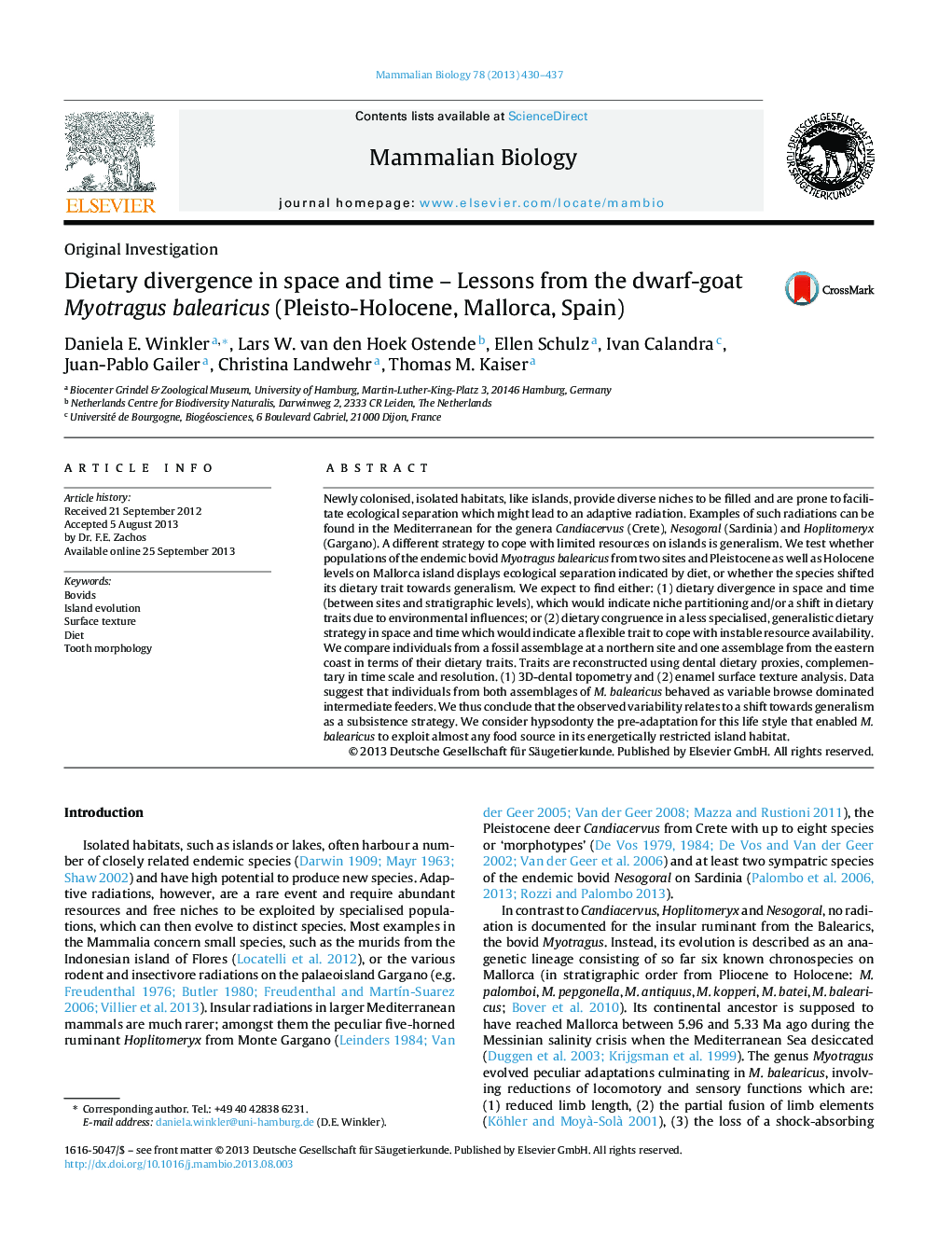| Article ID | Journal | Published Year | Pages | File Type |
|---|---|---|---|---|
| 2193617 | Mammalian Biology - Zeitschrift für Säugetierkunde | 2013 | 8 Pages |
Newly colonised, isolated habitats, like islands, provide diverse niches to be filled and are prone to facilitate ecological separation which might lead to an adaptive radiation. Examples of such radiations can be found in the Mediterranean for the genera Candiacervus (Crete), Nesogoral (Sardinia) and Hoplitomeryx (Gargano). A different strategy to cope with limited resources on islands is generalism. We test whether populations of the endemic bovid Myotragus balearicus from two sites and Pleistocene as well as Holocene levels on Mallorca island displays ecological separation indicated by diet, or whether the species shifted its dietary trait towards generalism. We expect to find either: (1) dietary divergence in space and time (between sites and stratigraphic levels), which would indicate niche partitioning and/or a shift in dietary traits due to environmental influences; or (2) dietary congruence in a less specialised, generalistic dietary strategy in space and time which would indicate a flexible trait to cope with instable resource availability. We compare individuals from a fossil assemblage at a northern site and one assemblage from the eastern coast in terms of their dietary traits. Traits are reconstructed using dental dietary proxies, complementary in time scale and resolution. (1) 3D-dental topometry and (2) enamel surface texture analysis. Data suggest that individuals from both assemblages of M. balearicus behaved as variable browse dominated intermediate feeders. We thus conclude that the observed variability relates to a shift towards generalism as a subsistence strategy. We consider hypsodonty the pre-adaptation for this life style that enabled M. balearicus to exploit almost any food source in its energetically restricted island habitat.
